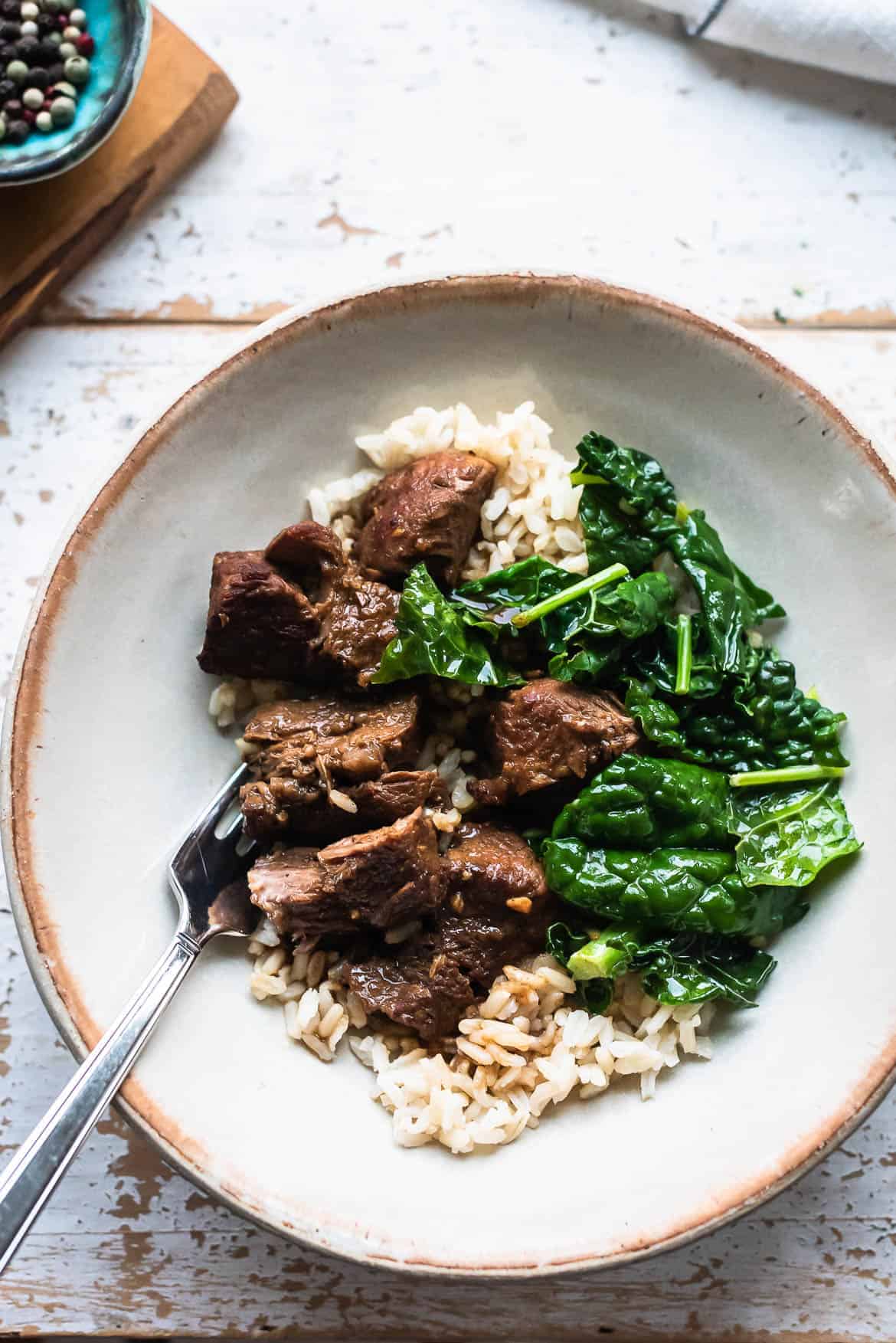The Top Filipino Food Recipes for Your Kitchen.
The Top Filipino Food Recipes for Your Kitchen.
Blog Article
Enjoy Standard Filipino Flavors With Easy-To-Follow Recipes
Discovering typical Filipino cuisine provides a special chance to engage with a rich tapestry of flavors and cultural narratives. As we check out these culinary traditions, one might question how to finest bring the warmth of Filipino hospitality to their own dining table.
:max_bytes(150000):strip_icc()/Ginataang-Gulay-Filipino-Vegetable-Stew-FT-RECIPE1023-4e7dd044042f49549a2c3421a03faf60.jpg)
Review of Filipino Food
Discovering the lively tapestry of Filipino cuisine exposes a rich cultural heritage affected by numerous historical and geographical aspects. The Philippines, an island chain of over 7,000 islands, boasts a diverse range of tastes and cooking strategies. The nation's culinary landscape is formed by indigenous traditions and the impacts of emigration, trade, and movement. Consequently, Filipino food is a special mix of Malay, Spanish, Chinese, and American elements.
Rice functions as the cornerstone of Filipino dishes, typically accompanied by a selection of veggies, meats, and seafood. The usage of vibrant tastes is a trademark of the food, with components such as garlic, onions, ginger, and soy sauce playing essential functions. Additionally, the focus on communal eating shows the Filipino society of hospitality and household ties.
Road food additionally plays a substantial role in the culinary scene, showcasing regional ingredients and innovative cooking techniques. As the Philippines proceeds to welcome globalization, the combination of conventional and contemporary impacts can be seen in contemporary Filipino dishes, better improving its culinary identity. Filipino food recipes. Overall, Filipino cuisine is a testimony to the country's history, culture, and vivid spirit
Must-Try Traditional Dishes
Filipino cuisine is finest experienced with its traditional dishes, each offering an unique understanding into the country's diverse culinary heritage. Among the must-try recipes is Adobo, a full-flavored stew usually made with hen or pork, seasoned in vinegar, soy sauce, and garlic before being slow-cooked to excellence. Its abundant and tangy flavor profile represents the heart of Filipino convenience food.
Another famous dish is Sinigang, a sour soup commonly prepared with tamarind, tomatoes, and various vegetables. This dish can include pork, shrimp, or fish, and is treasured for its revitalizing taste and warming up qualities.
Lechon, a whole baked pig, is a focal point at Filipino parties, known for its crunchy skin and tender meat. It personifies the joyful spirit of Filipino gatherings.
For those craving something wonderful, Halo-Halo is a delightful treat incorporating crushed ice, sweetened fruits, jellies, and topped with leche flan and purple yam.
Each of these standard meals envelops the essence of Filipino society, welcoming any individual to appreciate the vibrant flavors and rich background that define the island chain's culinary landscape.
Step-by-Step Recipes
Food preparation genuine Filipino recipes in the house can be an enriching experience that brings the vivid tastes of the Philippines right into your kitchen. With a myriad of typical recipes to pick from, utilizing detailed recipes enables both newbie and skilled cooks to master the techniques and tastes important to Filipino food.
Begin by choosing a recipe that intrigues you, such as adobo, sinigang, or lumpia. Each dish usually consists of an in-depth component listing complied with by clear guidelines, leading you via the cooking procedure.
As you progress, pay attention to cooking techniques special to Filipino food, such as sautéing (ginisa) or stewing (nilaga) These methods can see substantially enhance the depth of flavor in your dishes. Timing is important; follow the suggested food preparation times to accomplish the excellent appearance and preference.
Crucial Ingredients and Tips
Often, the secret to understanding Filipino cuisine depends on understanding and using necessary ingredients that define its unique flavors. Central to lots of dishes are staples like soy sauce, vinegar, garlic, and ginger, which add to the unique balance of mouthwatering, sour, and sweet notes. Soy sauce functions as a base for marinades and sauces, while vinegar, especially walking stick vinegar or coconut vinegar, presents a zesty brightness that is important in recipes like adobo.
Rice is an essential component of Filipino dishes, usually served along with major programs to take in tasty sauces. For a touch of credibility, select jasmine or long-grain rice. Additionally, utilizing fresh fruit and vegetables such as tomatoes, green beans, and eggplants boosts the meal's vibrancy and dietary worth.
Do not forget the relevance of natural herbs and spices, such as bay leaves, lemongrass, and chili peppers, which elevate the flavor profile. When food preparation, keep in mind that perseverance is key-- allowing components to blend together causes richer flavors. Welcome the technique of sampling as you go; this will enable you to readjust flavorings and accomplish the perfect equilibrium that defines Filipino food.
Offering and Delighting In Filipino Meals
Comprehending the subtleties of Filipino food prolongs past prep work and ingredients; it includes the method meals are served and taken pleasure in. The Filipino eating experience is defined by communal sharing, advertising a feeling of togetherness and event. Usually, see this site recipes exist in huge servings, permitting restaurants to engage in a range of flavors.
Rice, a staple in Filipino dishes, is usually acted as the foundation upon which the other meals remainder. Going along with viands, such as adobo, sinigang, or lechon, are put in the facility of the table, welcoming visitors to serve themselves. Filipino food recipes. This technique not only cultivates a loosened up environment however additionally motivates discussions and links amongst restaurants

Conclusion
Finally, traditional Filipino food uses a rich tapestry of tastes and social value, inviting exploration with its varied recipes. The easy-to-follow recipes provided promote the prep work of legendary dishes, promoting a deeper recognition for the components and strategies entailed. Emphasizing common dining, go to website these cooking methods reinforce family members connections and promote the heat of Filipino friendliness. Involving with this vivid cuisine not only improves the eating experience yet likewise maintains and celebrates the heritage of the Filipino individuals.
Report this page